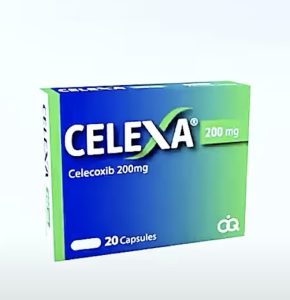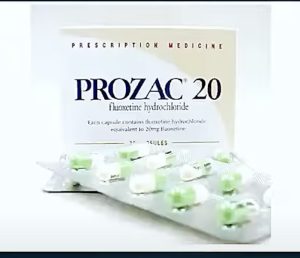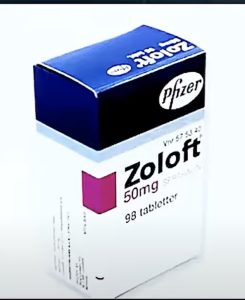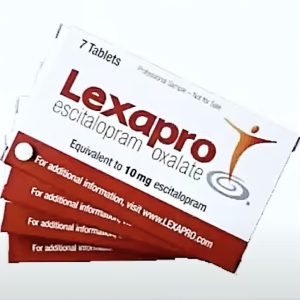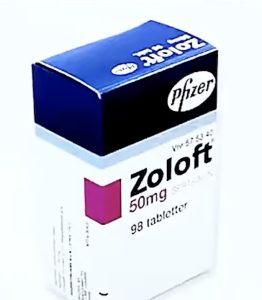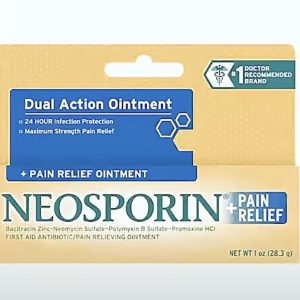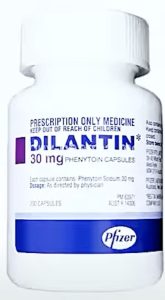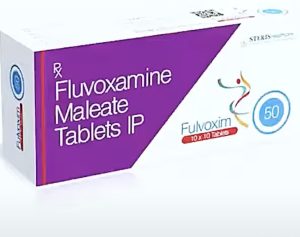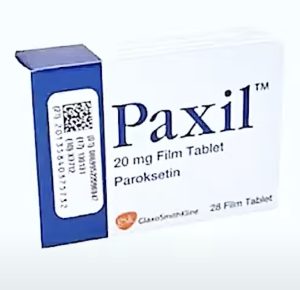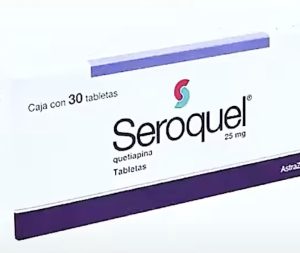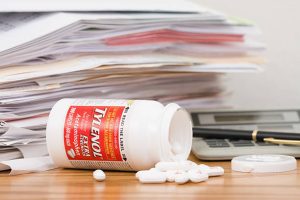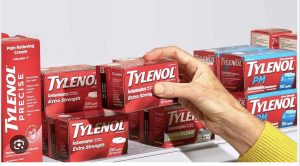Category Archives: Death By Medicine
MAID/Euthanasia: Targeting Homeless, Mentally Ill, Autism, Impoverished
VLA Comment: THE PANDORA’S BOX: In Canada where chronically ill people are being denied health care….instead… they are being offered Medically Aid in Dying (MAID). Lobbyists, NGOs are agressively pushing “dying with dignity” on many segments of the population.
Canadian Government Has Now Euthanized 90,000 Citizens with ‘Assisted Suicide’ Program
Behind the staggering death toll lies a grim reality as Canada’s collapsing socialized healthcare system is driving the sick and elderly toward euthanasia as an “alternative” to treatment.
CATARACTS-Loss of Vision-BLINDNESS Caused by Prescription Drugs (Dr.Ardis)
Drugs containing Tylenol
All drugs containing acetaminophen:
OTC
1. Tylenol: The most well-known brand for acetaminophen.
2. Excedrin: Often used for headaches, it combines acetaminophen with aspirin and caffeine.
3. NyQuil: A cold and flu medication that includes acetaminophen for pain relief.
4. DayQuil: Similar to NyQuil but formulated for daytime use.
5. Advil Dual Action: Combines ibuprofen and acetaminophen for enhanced pain relief.
6. Alka-Seltzer Plus: Some formulations include acetaminophen for cold and flu relief.
7. Midol: Often used for menstrual pain, some versions contain acetaminophen.
8. Aspirin-Free Excedrin: Contains acetaminophen, caffeine, and other ingredients for headache relief.
9. Bayer Back & Body: Combines acetaminophen with aspirin for back pain relief.
10. Aleve-D: Some formulations may include acetaminophen for added pain relief.
11. Tylenol Extra Strength: A higher dose formulation of acetaminophen for more severe pain.
12. Advil PM: Some formulations may include acetaminophen along with diphenhydramine.
Cold and Allergy Medications
1. Zyrtec-D: Some formulations may include acetaminophen for allergy relief.
2. Sudafed PE: Certain combinations may contain acetaminophen for cold symptoms.
3. Robitussin Cough + Chest Congestion DM: Some versions include acetaminophen for pain relief.
4. Vicks DayQuil: A daytime cold and flu relief option that contains acetaminophen.
5. Benadryl Allergy Plus Congestion: Certain formulations may contain acetaminophen for added relief.
6. Claritin-D: Some versions may include acetaminophen for allergy relief.
RX
1. Percocet: A combination of oxycodone and acetaminophen used for pain relief.
2. Tylenol with Codeine: Combines acetaminophen with codeine for more severe pain.
3. Fioricet: Contains acetaminophen, butalbital, and caffeine, often prescribed for migraines.
4. Vicodin: A combination of hydrocodone and acetaminophen, used for moderate to severe pain.
5. Lortab: Another combination of hydrocodone and acetaminophen.
6. Norco: Similar to Vicodin, it combines hydrocodone with acetaminophen.
7. Roxicet: A combination of oxycodone and acetaminophen, used for pain management.
8. Cocet: Combines acetaminophen with oxycodone for pain relief.
9. Fentanyl Combination Products: Some formulations may combine fentanyl with acetaminophen for pain management.
10. Lorcet: A combination of hydrocodone and acetaminophen.
11. Percodan: Combines oxycodone with acetaminophen for pain management.
12. Tylenol with Tramadol: A combination of acetaminophen and tramadol for moderate to severe pain.
Combination Products
1. Cold and Flu Formulations: Many products for cold and flu symptoms contain acetaminophen, such as Theraflu and Robitussin.
2. Pain Relievers: Some multi-symptom pain relievers may include acetaminophen along with other active ingredients.
3. Robitussin Multi-Symptom: Contains acetaminophen along with other ingredients for cough and cold relief.
4. Theraflu: Various formulations include acetaminophen for symptom relief.
5. Excedrin Tension Headache: Specifically formulated for tension headaches, containing acetaminophen.
6. Mucinex: Some formulations include acetaminophen for cold and flu symptom relief.
7. Coricidin HBP: Certain versions contain acetaminophen for cold symptoms, designed for those with high blood pressure.
8. Sominex: Some formulations may include acetaminophen for sleep aid with pain relief.
Pediatric
1. Children’s Tylenol: Liquid formulations specifically designed for children.
2. Infants’ Tylenol: Liquid acetaminophen specifically designed for infants.
3. Children’s Motrin: Some formulations may include acetaminophen alongside ibuprofen.
4. Children’s Advil: Some formulations may include acetaminophen alongside ibuprofen.
5. Pediatric Fever Reducers: Various brands offer liquid acetaminophen specifically for children.
TYLENOL….HERE IS WHY IT IS BAD!
TYLENOL: NAPQI (N-acetyl-p-benzoquinone imine) toxicity
occurs from an overdose of acetaminophen (APAP), which is a common occurrence in pregnancy. While NAPQI does not cross the placenta, the parent compound, APAP, does, posing a risk of liver damage to both the mother and the fetus. Fetal risk increases after 14 weeks gestation when the fetal liver begins metabolizing APAP into NAPQI
Mechanism of toxicity
• Normal APAP metabolism: At therapeutic doses, acetaminophen is metabolized in the liver and detoxified by glutathione.
• Overdose: In an overdose, the glutathione supply is exhausted, and the APAP is shunted to the cytochrome P450 (CYP450) system, which produces the toxic metabolite NAPQI.
• Cellular damage: In the absence of sufficient glutathione, NAPQI binds to and damages liver cells, leading to severe hepatotoxicity, acute liver failure, and potentially death.
Fetal susceptibility:
o The fetus can produce its own NAPQI starting around 14 weeks gestation and has a limited supply of glutathione, making it vulnerable to APAP’s effects.
o The fetal liver’s CYP450 activity increases with gestational age, peaking in the third trimester.
Maternal effects
• Hepatic: Liver injury, fulminant hepatic failure, liver transplant, and death.
• Other organs: Renal failure and pancreatitis.
• Gastrointestinal: Nausea, vomiting, anorexia, and abdominal pain.
• Neurological: Hepatic encephalopathy and confusion.
Fetal effects
• Fetal hepatotoxicity: The fetus’s developing liver can suffer direct damage, especially in the third trimester.
• Fetal death: Overdose can lead to spontaneous abortion and fetal demise in all trimesters, with late presentation of maternal toxicity being a significant risk factor.
• Premature birth: Acetaminophen overdose can induce premature labor.
• Neurodevelopmental: Some studies suggest an association between prenatal APAP exposure at therapeutic doses and an increased risk of ADHD and other neurodevelopmental disorders, but data remains observational.
Tylenol (acetaminophen) is processed by Cytochrome P450 (CYP) enzymes, specifically CYP1A2, CYP2E1, and CYP3A4, which convert it to a toxic byproduct called NAPQI (N-acetyl-p-benzoquinone-imine).
When acetaminophen is taken at therapeutic doses, most of it is processed differently, but high doses can overwhelm these pathways, leading to increased NAPQI production and potential liver damage.
How CYP Enzymes are involved:
- Metabolism:CYP enzymes are crucial for metabolizing acetaminophen, especially at high or toxic doses.
- NAPQI Formation:These enzymes catalyze the oxidation of acetaminophen, forming the highly reactive and toxic intermediate NAPQI.
- Toxicity:NAPQI can bind to cellular macromolecules, leading to liver damage and necrosis.
Key CYP Enzymes:
- CYP2E1:This enzyme is a significant contributor to the bioactivation of acetaminophen to NAPQI.
- CYP1A2 & CYP3A4:These are also involved in acetaminophen metabolism, with their contribution varying depending on drug concentration.
Implications:
- Overdose Management:Understanding the role of CYP enzymes is essential for managing acetaminophen overdose, as inhibiting these enzymes could potentially reduce NAPQI formation.
- Drug Interactions:The activity of CYP enzymes can be influenced by other substances or conditions, potentially altering acetaminophen’s toxicity.
@drjoshreddTylenol breaks down into a toxic byproduct (NAPQI). Normally, glutathione—the body’s master antioxidant—neutralizes it. But in pregnancy, Tylenol use can cross into the placenta, and stresses the baby’s immature liver and brain. 💡 Safer support options: hydration, rest, lukewarm baths, arnica, chamomile, vitamin C, glutathione-supporting foods, and when needed, talk to your doctor for alternatives. Here are 3 human studies from Johns Hopkins, Yale & Harvard: Yale (Liew et al., 2022): Observational studies link frequent prenatal acetaminophen use with ↑ risk of asthma, neurodevelopmental issues, and genital malformations. • Harvard (Baccarelli et al., 2025, BMC Environ Health): Systematic review of 46 studies found prenatal exposure associated with higher risk of autism & ADHD. • Johns Hopkins (Ji et al., 2019, JAMA Psychiatry): Cord blood biomarkers of acetaminophen linked to ~2–3× higher risk of autism/ADHD in children. Here are 10 more. This isn’t new news: References (Human Studies on Acetaminophen Toxicity): • Mitchell JR et al. J Pharmacol Exp Ther. 1973 — First evidence that acetaminophen depletes glutathione and forms toxic metabolites. • Prescott LF et al. Lancet. 1977 — NAC rescues patients by replenishing glutathione. • Rumack BH & Matthew H. Pediatrics. 1975 — Classic clinical description, origin of the APAP nomogram. • Heubi JE et al. J Pediatr. 1998 — Pediatric hepatotoxicity after repeated dosing. • Davern TJ et al. Gastroenterology. 2006 — Serum protein adducts confirm NAPQI formation in humans with acute liver failure. • James LP et al. Clin Pharmacol Ther. 2009 — Adducts track with severity of overdose in adults. • James LP et al. J Pediatr. 2001 — Adducts also confirmed in children with toxicity. • Larson AM et al. Hepatology. 2005 — U.S. multicenter study: APAP is the leading cause of acute liver failure. • Hinson JA et al. Handb Exp Pharmacol. 2010 — Comprehensive human/mechanistic review.♬ original sound – Dr. Josh Redd
@dailymail President Trump claimed Tylenol taken during pregnancy is linked to autism, urging people not to take it. Read more at DailyMail. #news #breakingnews #trump #politics #autism ♬ original sound – Daily Mail
Do Doctors Make Money Off Of VACCINES?
“Doctors are being paid to vaccinate, not to evaluate,” Health Secretary Robert F. Kennedy Jr. said in a recent video. “They’re pressured to follow the money, not the science.”
Dr. Paul Thomas, who ran a pediatric practice in Oregon, estimated in a 2021 study that he was losing more than $1 million a year by offering parents what he called informed consent, or detailed discussions about the benefits and risks of the recommended vaccines.
EXAMPLES:
- Blue Cross Blue Shield Blue Care Network of Michigan: $400 per child who receives a set of 24 or 25 vaccine doses on or before their second birthday.
- Aetna Better Health of Louisiana: $10–$25 per member, depending on level of COVID-19 vaccination coverage practice-wide.
- Molina Healthcare of Ohio: $100 incentive for COVID-19 vaccination.
- Anthem Blue Cross and Blue Shield Medicaid: $50 per individual aged 6 months and older who received a COVID-19 vaccine by Dec. 31, 2022.
- United Healthcare Community Plan of Michigan: Incentives for patients who receive the meningococcal, Tdap (tetanus, diphtheria, and pertussis), and HPV vaccines by their 13th birthday.
- Meridian: Up to $120 per child who receives the 24 or 25 doses by their second birthday, or adolescents who received three certain doses by their 13th birthday, capped at $9,600 for each category.
- BlueCross BlueShield of Illinois: $149 for each child, if 63 percent or more meet criteria, who received the 24 or 25 vaccine doses by the time they turn 2.
- Central California Alliance for Health: Bonuses for children who receive at least 24 doses by the time they turn 2 and the three certain doses before they turn 13.
READ MORE…
CLOTS: Stew Peters and Funeral Director
Documentary: THE AGENDA: DIED SUDDENLY
The 1986 ACT Movie/Doc by Dr. Andy Wakefield
Who Killed Alex Spourdalakis (Documentary by Dr.Andy Wakefield)
Watch Documentary
VLA Comment: The most riveting documentary I have ever seen. Childhood vaccines that cause injury and behavior problems.Then psych drugs and medications that he could not metabolize. A real life horror story! If we had his DNA we could attempt to prove that the vaccines and wrong medications tortured and killed him.
